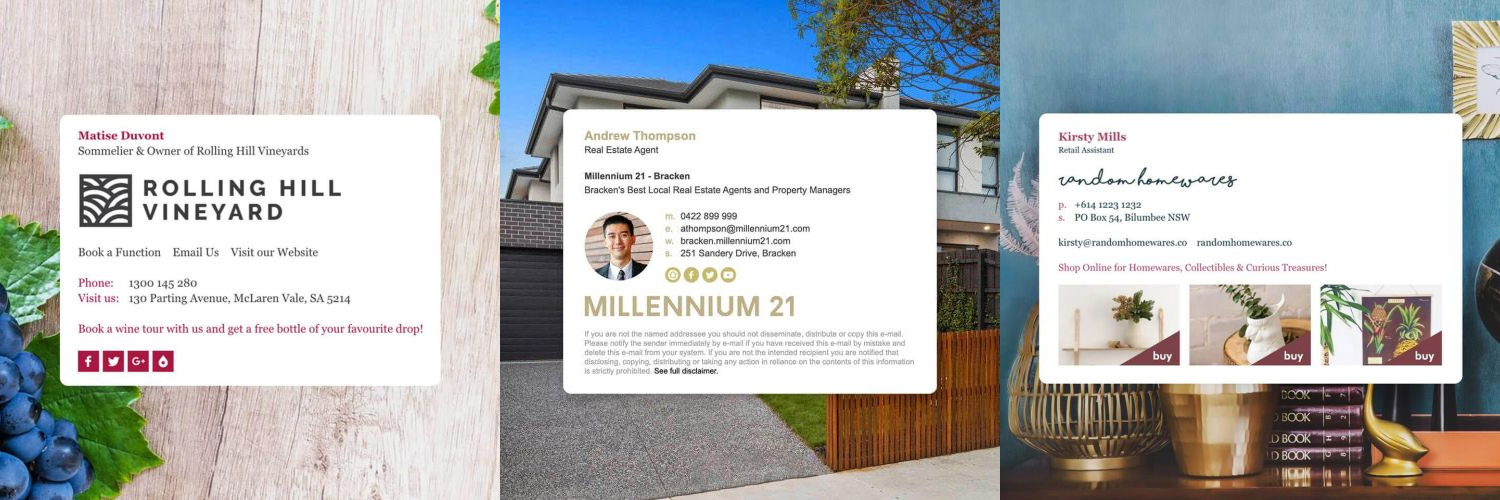HTML Email Signatures and Spam Filters
You've just installed your brand new HTML email signature and sent your first email. But the recipient hasn't received it. Looking into the issue, you discover it's been caught up in a spam filter! It must be the email signature, right?
Just open up your inbox and you will see that spam filters are a necessary evil in today's life. On one hand, if spam filters weren't around, you would be getting a tonne of spammy emails that you would have to painstakingly sift through on a daily basis to make sure that you're not missing out on anything important.

On the other hand, spam filters can sometimes flag important emails as spam and make your life miserable when you miss one or two of those important emails coming through.
I know which one I would ultimately prefer though. Spam filters are the lesser evil of the two. I prefer to just check my spam filter folder occasionally to make sure that nothing important has been caught up and get on with life.
Now let's talk about HTML email signatures and spam filters. What are the chances that your HTML email signature is the sole cause of sending your emails to spam filters? It's not too likely and I will tell you why.
First, I need to quickly tell you how spam filters work. When you send an email to anyone, it will most likely pass through some sort of spam filter. It could be Cloudmark, Barracuda, Spam Assassin, Postini or another one, depending on which email client, the recipient is reading your email on.
When the email passes through, the spam filter gives your email a score, say for example, out of 10. It checks a few things like:
- spammy subject lines
- subject lines all in CAPITAL LETTERS
- the content in the message
- if the domain or IP the email was sent from has been blacklisted
- if there's any HTML and links
- poorly coded HTML
- low image:html ratio
There's a lot more, but I don't really need to go into it all. You get the idea.
Now, if your email collectively receives an 8/10 or more (for example), then it's sent directly to the spam folder. If it's between 6 and 8 (again, example), it might get flagged as potential spam for the recipient to look at and decide upon in their inbox. If it receives 6 or less, it's passed as normal and goes into the inbox, without any worries.
So as you can see from the way spam filters work, their needs to be a collection of issues in order for your email to be caught up in a spam filter. It would need a spammy subject, poorly formatted HTML and a high image:text ratio. So while a HTML email signature can certainly contribute to the issues, it's never usually the main cause.
Example Case
We recently had a client report that when he included his email signature, the message would be sent to spam. When he didn't include his signature, the email would go through. All signs point to the email signature to be the problem, but this wasn't so.
It turned out his domain was blocked by the Barracuda spam filter. The domain received a 4.50 score on the spam filter test and the HTML passed with 0. We assume, as the user sent HTML (his email signature), with a blocked domain, this would have caused this issue. Our advice was to get the domain unblocked by Barracuda, which fixed the issue for the client.
What can you do to reduce the chances of your HTML email signature being caught in spam filters?
If you've created your email signature with our Email Signature Rescue software, the chances that your HTML email signature is the sole cause of being caught in spam filters is extremely low. Why? Because our email signatures are coded using best HTML practices, and have a great text:image ratio, which are two very important criteria that spam filters check for.
However, as discussed previously, there are many other reasons why emails get caught in spam filters. Those reasons are outside of the HTML itself, including things like your subject line and content in the email message. See the following information about how to fix potential problems with your emails and your email signature.
Try a different subject line
Avoid using spammy subject lines like "free", "buy now", "click here".
Don't use CAPITAL LETTERS in your subject line
Just as it says. Don't use capital letters.
Address the person by their first name
You should know who you are emailing, so use their first name in the content of the message.
Avoid using spammy content
Check the content of your email and make sure it doesn't sound too spammy.
Reduce the amount of images in your email signature
If you have quite a few images in your email signature, try taking some out. This may improve your spam filter score.
Don't use Word to generate professional HTML email signatures
Word productes it's own spammy, terrible HTML code. Not only will your Word generated email signature not work in all email clients, it can also get caught up in spam filters too.
Only send to a few email recipients at a time
Don't fill up the BCC field in your email message with hundreds or thousands of email addresses. Use software like MailChimp or Campaign Monitor to send large amounts of subscriber emails and avoid getting your emails from your own domain sent to junk mail.
Use 10px - 14px size fonts
Using large fonts are another trigger for spam filters. Use a regular sized font for reading and writing emails, anything between 10px to 14px should be acceptable.
Don't include too many links
Spammers are known for sending lots of links in emails. Don't link everything in your email signature, just link to your website, email, images and social media icons.
Don't link to any spammy websites
If the links in your email signature are going to websites that have been flagged by spam filters as untrustworthy, this will add to your spam filter score. Make sure any links you include are to a trustworthy website.
Turn off short URLs
If you're using our short URLs feature, and your emails are going to spam, turn it off. Some spam filters check if the link name and link address are the same.
While we cannot guarantee that all emails with our HTML email signatures will pass through spam filters every time, because there are too many variables that users themselves contribute to, like subject, content and blocked domains, we have done all we can do from our end, to ensure that the HTML in our email signatures is spam filter friendly.
What should I do if my emails are being caught in spam filters?
Firstly, you should check if your domain or IP is blocked by any spam authorities. There's some free tools you can use to check this including:.
Second, if your domain and IP are clear, please contact support through your member account to enquire about a free Spam Filter test.
We will ask you to send your email signature from your own email client to an email address, and we will then pass on the results of the spam filter test to you.
There's some other questions that we might ask you like:
- Which email client you are sending from
- Do your emails only get caught up in internal company spam filters, for example, when sending to colleagues within your own company or organization
- Or is the person you are sending an email to using Google Apps or Gmail
There's a few reasons we ask these questions.
1. We need to know which email client you are sending from so we can test the email signature ourselves.
2. Generally, if you're sending emails within your own organization and they are being caught in spam filters, you will need to contact your IT Administrator to discuss the issue with them and resolve it in your own company's IT department.
3. If you're sending to someone on Google Apps or Gmail, it can be harder to diagnose the issues, as there's not a lot of feedback provided by the Postini spam filter (which is what Google uses).
Wrap it up
In conclusion, it could be possible that when you include your HTML email signature in an email, it gets caught up in spam filters, because the HTML you are sending, combined with other issues, will add to the spam filter score.
Our best recommendation would be to use our software to create your HTML email signatures and seek support from our Support Team if you experience any further issues.
Written by Amy Jarrett, Co-Founder, on 8th June 2016.





